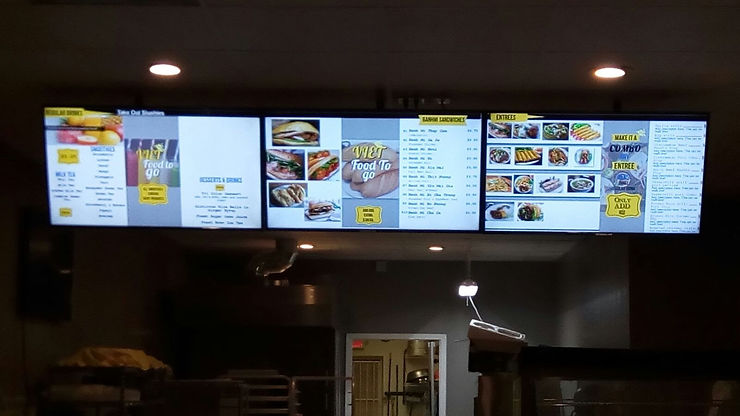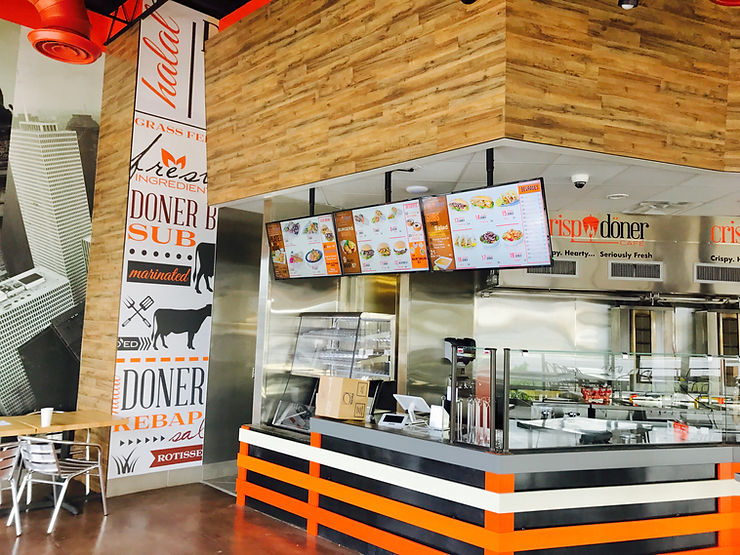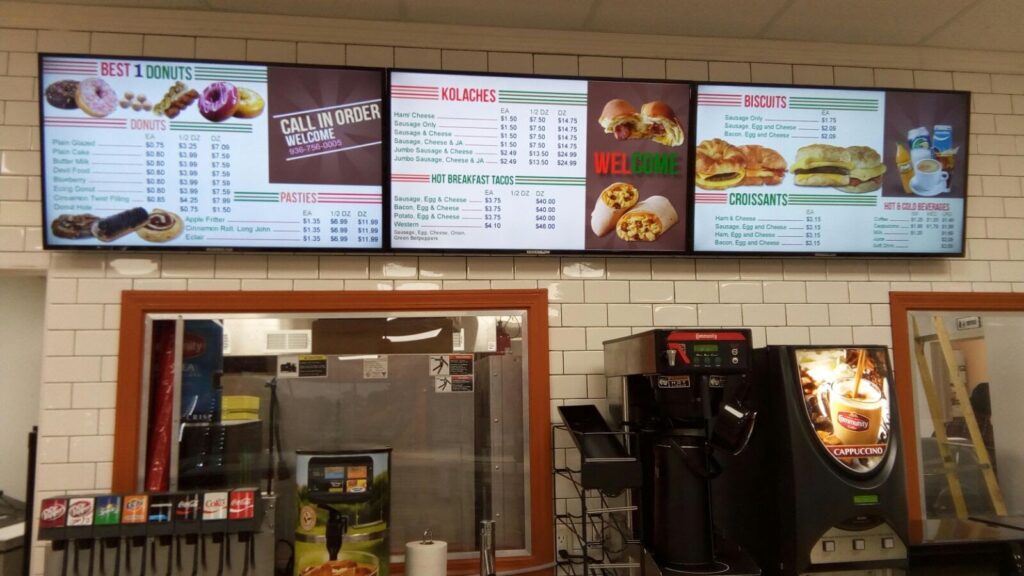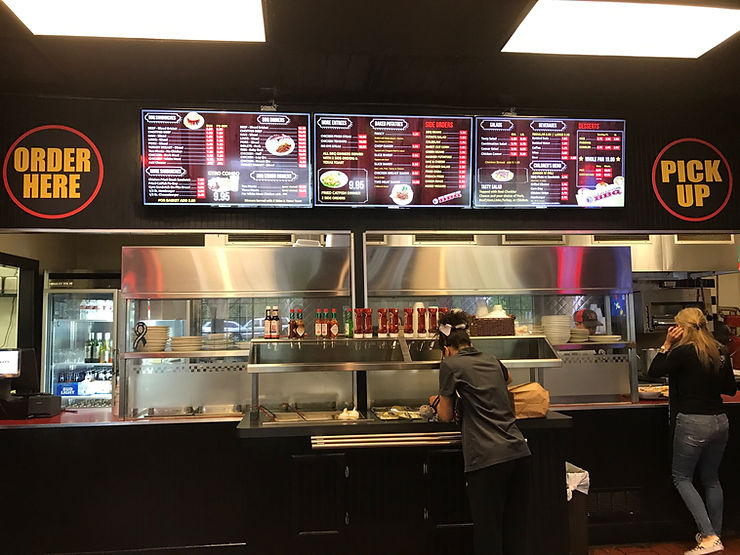Original artical posted on Digital Signage Today
Many restaurants have put those old cardboard boards in the trash and traded them in for digital menu boards. Giants ranging from Subway to McDonald’s have completed national roll outs of digital menu boards. It’s obvious that menu boards are more popular than they used to be, but have we reached the tipping point of mass deployment? What challenges remain? And how do restaurants make them a success?
Where are we now?
Chris Mims, technical product manager at Sicom, believes restaurants have reached the “turning point” for deploying digital menu boards.
“With the new capabilities of this technology, combined with more affordability, we’re seeing more quick service and fast casual restaurants go digital. We’re also seeing that once restaurants start to switch, that they go completely digital due to the significant benefits offered by digital menu boards, such as tailoring content for suggestive selling and improving the efficiency of menu content management,” Mims said.
He also emphasized that digital menu boards enable restaurants to develop more complex marketing campaigns to improve the brand. Restaurants can, for example, more easily update the menu boards with key specials or messages than with a static board.
Challenges and pitfalls
One of the biggest challenges with setting up digital menu boards is dealing with the logistics. Mims mentions that “since some digital menu board providers help enforce brand standards and configure different levels of access and control, this can require some initial setup effort.”
Restaurants planning large deployments must often run pilot tests as well to identify key areas of concern. For example, a pilot test might help identify key issues with content management on the managerial side.
Richard Ventura, vice president of business development and solutions at NEC Display Solutions, believes it is key for restaurants to avoid, “trying to do too much.”
“You do too much you are going to confuse the audience and be counterproductive to the goals. Also having so much motion distracts from the purpose the menu boards. Being clean, clear and concise will drive engagement and sales,” Ventura said.
Successful tactics
One of the best tactics to follow to make a menu board deployment successful is to have buy-in on the corporate side. If everyone is on the same page, it will help the deployment go much more smoothly.
“With corporate commitment, franchisees benefit from access to the brand’s marketing and creative teams to produce the best content for the menu boards,” Mims said. “It makes sense for franchisees to push for these initiatives with their brand to ensure the best return on their investment.”
Rick Cook, senior manager of U.S. It restaurant solutions at McDonald’s pointed out in a previous story that most technology problems are really “communication problems.” If your managers don’t understand the technology or its expectations, it can cause trouble.
“You have to communicate to thousands of business owners. You have to make sure content managers are on board with the message,” Cook said.
What’s the real benefit?
The true benefit of menu boards is engagement. If you engage successfully with your customers, you will craft loyalty. This can take several forms. Ventura brought up a few restaurants that deploy video walls for customers to post selfies of themselves. More broadly, it means delivering meaningful content to your audience.
Another way to benefit from this engagement is to integrate your point of sale systems with the menu boards. This can help keep all the information up to date to prevent any customer complaints about incorrect menus.
“These integrations are important when menu board content is updated in near real-time environments, such as with limited time offers. You need your point of sale and menu boards to have the same content,” Mim said.
A final benefit of menu boards is to gather key customer purchasing data. Restaurants can use this information to more directly market to customers. Mims mentions how restaurants can “highlight complementary items or direct attention to higher priced items.”




